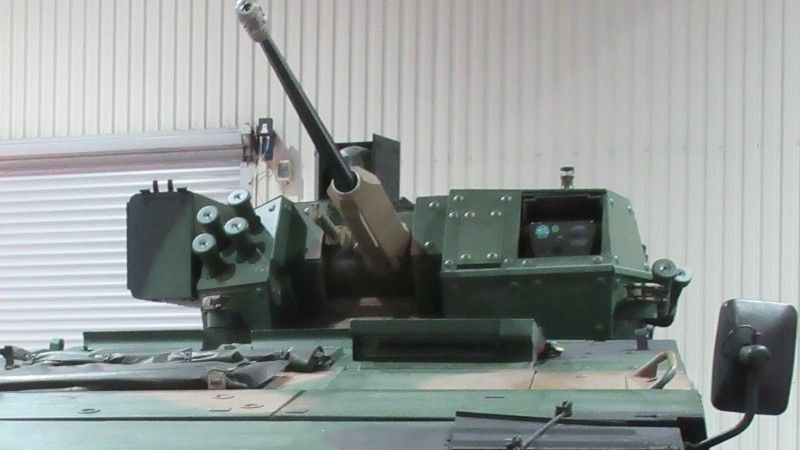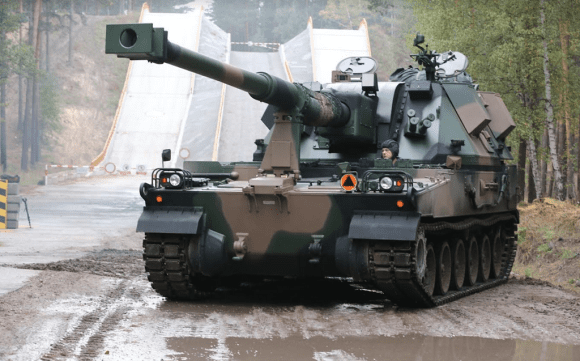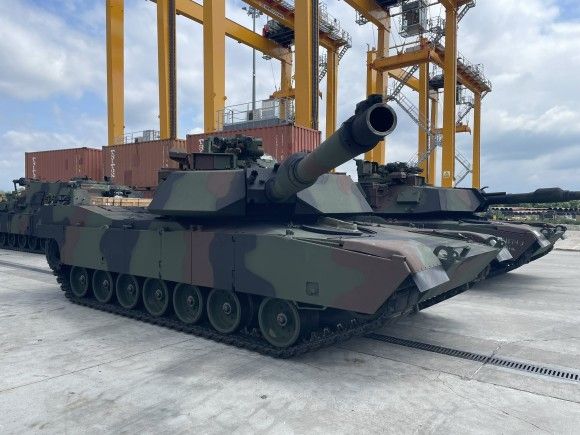Industry
Polish Heavy IFV. Armour and Fire to Support the Main Battle Tanks

Photo. Jerzy Reszczyński
Just a few days before the Polish Armed Forces Day, a framework agreement is to be signed on the delivery of a heavy IFV designed for the Polish Armed Forces. The platform is to be primarily tasked with supporting the main battle tanks on the battlefield, Abrams MBTs included. What the new platform for the Polish Army is going to be?
The IAR media outlet was the first one to inform that a memorandum on the development of a Heavy Infantry Fighting Vehicle, involving the HSW S.A. company, would be among the agreements planned to be signed on 14th August. However, the above does not refer to a "heavy Borsuk IFV", as it concerns a vehicle based on the Krab/K9 platform, sometimes referred to as the PK9. The aforesaid vehicle is expected to be fitted with ZSSW-30/40 turret, developed jointly by HSW S.A. and WB Electronics.
Here, it is worth to define the context. First, both the platform and the turret itself are subject to HSW S.A. IP rights. ZSSW is a proprietary solution, meanwhile, the Krab base platform license grants the owner "unlimited possibilities for further use of this chassis in other weapons systems, and manufacturing of that platform, both to meet the Polish Ministry of Defence requirements and export market demands as well", as it was stated in 2015 by the undersecretary of state at the MoD, Maciej Jankowski.
What that means is the fact that both components will be reconfigurable, to meet the heavy IFV requirement. Let us add that the technological and technical foundation has for the heavy IFV been well-tested. Apart from passing a rigorous test programme, Krab has also been battle-proven in Ukraine, where the platform is praised for its reliability, offroad capabilities and handling. The ZSSW-30 turret, meanwhile, is a result of many years of research and development and a comprehensive test programme finalized in 2021, with a positive result. The turret is currently being series manufactured, and a couple of examples on the Rosomak APC are expected to be commissioned by the end of this year. A modified variant of this system would also be integrated on the Borsuk IFV. The heavy IFV would thus be made out of two, proven components, modified and tailored to match a proper configuration.
What the Polish Heavy IFV is Going to Be Like?
What the configuration in question may be? The K9/Krab platform modified by the Polish engineers is a very flexible design that can carry up to 50 tonnes of payload, retaining good performance at the same time. The platform for the heavy IFV would not carry the howitzer turret. One may expect that the drivetrain, and the hull, would be modified to ensure good ballistic and IED/mine resilience.

Photo. Jerzy Reszczyński
Given its weight, the IFV will most certainly offer protection against modern automatic cannons. Experience gathered when developing the Borsuk IFV weighing 28 tonnes (baseline variant) will also be useful here, but the Krab/K9 platform would still serve as a base. Thanks to the above, the payload headroom will be much greater, and this will allow for equipping the vehicle with much better armour. The heavy IFV will be redesigned with infantry ergonomics in mind. And it will also offer electrical headroom sufficient to support extra components, such as a hard kill APS (kinetically countering the ATGMs). The latter does not have to be immediately integrated, the integration may happen during the production phase. The Anglo-Saxon countries use the phrase "fitted for, but not with" to define this approach.
ZSSW-30 Turret
ZSSW-30/40 turret is another system that would be used in the development of a Polish heavy IFV. The above design is an indigenous system developed within the framework of an R&D undertaking pursued since 2013. The baseline variant features the 30 mm Bushmaster II Mk 44S cannon, 7.62 mm machine gun, and Spike LR/LR2 ATGM launcher. All of the aforesaid elements are integrated by WB Group's fire control system, while two independent PCO optoelectronic modules serve as the sensors. The functionality of the turret is being continuously expanded, and its open architecture would facilitate future upgrades (the same can be said about the enhancement of the turret with further subsystems).
Both the fire control system and the optoelectronic sensors are characterized by world-class performance specifications. The automatic cannon meanwhile is tailored to using several types of munitions, ABM rounds included. The MK44S ("Stretch") variant can also be modified to shoot the 40x180 mm round (referred to as "Super Forty"), instead of the 30x173 mm. This is achieved by the replacement of just a few elements and can be done rapidly, even in field conditions.
The new ammunition exhibits performance exceeding that of the old rounds, when it comes to its AP properties (for the AP rounds), and also when it comes to its lethality against the “soft targets” (fortifications, infantry, ATGM positions, UAVs) - when the ABM rounds are used, as more fragments are created.

Photo. Jerzy Reszczyński/Defence24.pl
Armament as such is a good match for a heavy IFV platform. Contrary to the lighter Borsuk IFV, it would be easy to create enough space for secondary munitions. The turret is also going to be modified within the scope of enhancing its armour protection levels. However, these are not the first changes ever made to the ZSSW-30 design. Borsuk features a ZSSW-30 turret that has been modified when compared to its Rosomak-borne counterpart. The relevant R&D effort progresses efficiently here. Many signs suggest that the case of the heavy IFV may be identical.
Polish Heavy IFV - What Its Purpose Would Be?
It is worth answering a question on how the heavy IFV would be employed. Up until the start of the full-scale war in Ukraine, the Polish Army believed that all IFVs and wheeled APC-based IFVs shall offer amphibious capabilities. This often hampered the modernization efforts tied to the existing platforms. The "amphibious dogma" mentioned above was first questioned within the 2017 Strategic Defence Review. But the aforesaid conclusion, and many others, had been forgotten, until the escalation of the war in Ukraine.
Currently, it is assumed that the amphibious variant of the Borsuk IFV would serve as a key tool used by the mechanized infantry units, supported by main battle tanks and other fighting assets. The heavy IFV is to be operated by the 18th Mechanized Division armed with the Abrams main battle tanks. Possibly, they could also become a part of armoured brigades.
The main task assigned to the heavy IFVs and the troops that they would carry would be to support the main battle tanks on the battlefield. One may even risk stating that these elements could be referred to as "armoured infantry", specialized in supporting the main battle tanks. This means that the aforesaid units would conduct operations jointly with main battle tanks, countering a broad spectrum of threats that could be a challenge for the MBTs in delivering the firepower in the primary use cases, both in the offensive and defensive settings.

Photo. Polish Ministry of Defence; Twitter.
The heavy IFVs would use their automatic cannons to engage enemy ATGM launchers, infantry elements, UAVs, and light vehicles, accompanying the main battle tanks and protecting them from potential threats. Hence the importance of ensuring that they feature armour that is as tantamount to one of the MBTs as possible. The situational awareness is also an important component here.
Not only could the heavy, large IFV based on the K9/Krab platform, not limited by the amphibious capability feature an active protection system, but it could also have a UAV integrated onboard some of the vehicles, for instance, those carrying support squads. Provided that the R&D efforts are completed. And many signs suggest that we may be dealing with such a scenario. The base building blocks, namely the ZSSW-30 turret and the K9/Krab base platform, exhibit high performance and offer good capabilities. Not only would the new platform offer good combat capabilities, but also a lot of developmental headroom. The integration of the Krab turret on the platform coming from Korea may be used as a good example here. Of course, one needs to be realistically proportionate, as design changes will certainly be required to accomplish the new integration.
